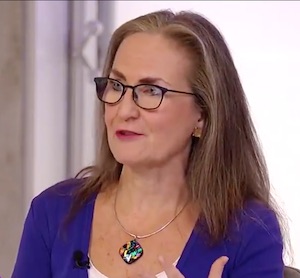At today’s RIMS ERM Conference 2021, a hybrid event with in-person experiences in New York City and virtual content online, many of the presenters focused on the intersection of ERM (enterprise risk management) with other mission-critical three-letter topics, including ESG (environmental, social and governance) and DEI (diversity, equity and inclusion).
In one of the afternoon’s sessions, “Identify and Solve Any Organizational DEI Issue In One Hour,” presenter Layne Kertamus, professional in residence of risk management and insurance at Utah Valley University, explored “new ways to talk about what needs to be said, and what needs to be listened to.”
“Most organizations that I’m aware of have moved past the idea that they have to do something on [DEI] issues for our stakeholders—it has moved on to ‘We cannot afford to not have some real results in these arenas’ and that should be motivation enough, if we needed any motivation,” Kertamus said. “The issue will not go away and it will evolve. Hopefully we can find a way to make this not just a prompt for change, but a real asset.”
Kertamus noted the particular challenges of the “frozen middle” in implementing meaningful DEI initiatives. Middle management feels pressure from both above and below to take DEI action, and “may react to hearing these goals with concern or dread—for example, thinking ‘My status and opportunities may now be more limited than they were before.’”
With the “why” and other background largely established, Kertamus focused the session on one approach to the “how” of DEI-related change. While many DEI discussions start with general open forums and reminders about being respectful and open, he noted that some of these approaches may lead to inauthentic or surface-level outcomes. To really get into an authentic plan that gains acceptance, Kertamus said, “sometimes we need to create environments where we can talk the way we need to talk.”
He proposed that organizations adopt a case study method to facilitate some of these discussions, outlining the “one hour” from his session’s title:
- With this method, a “case presenter” brings their concern, challenge or passion to present a large-scale DEI-related issue in the workplace that impacts other stakeholders. A facilitator should be selected and need not be an expert, but must bring an open mind and a willingness to enforce time limits. A group of “peer consultants” is then gathered from across the company, perhaps at different levels or in different departments.online pharmacy lexapro with best prices today in the USA
- First, the group listens to a five minute presentation from the case presenter, and then spends 10 minutes asking fact-based questions directed through the facilitator.online pharmacy flomax with best prices today in the USA
It is critical that the questions are directed and perhaps even pointed, but be focused on facts and not opinions or defenses.online pharmacy cozaar with best prices today in the USA - The largest segment of the process is a group diagnostic session, spending 20 minutes examining what, if anything, the presenter may have left out, may have ignored as a result of their own lived experience, or other gaps in the issue. It is critical not to jump to solutions in this phase—you may get “answers,” but the purpose here is true diagnosis.
- The next 10 minutes should be spent on group action brainstorming, brainstorming solutions for the presenter, embracing all perspectives and bringing personal experience, values, and insight to the table. “Be willing to give the presenter bad news, if necessary,” Kertamus urged. For example, you may need to acknowledge that there is no solution, or that they missed a strategic opportunity along the way. The presenter should remain quiet and listen during this step.
- Next, the presenter gets 10 minutes to respond to the discussion, speaking candidly and asking questions after listening to the group’s brainstorming session. “This can be a defensive time, they may feel beat up, but it can also be an opportunity for real connection, understanding, and for making agreements and commitments moving forward,” he said.
- If agreements are made, one question is critical before adjourning: “When will you move forward using action steps recommended today?” This can be a critical moment in advancing concrete plans and changes in attitude or approach to DEI in the workplace.
While this approach can be used with a wide range of issues as the focus “case,” Kertamus noted it is particularly useful with “problems where someone cannot just use their authority to impose a change or solution,” for example, a leader who has tried to implement changes and build equity and inclusion as values in a department but keeps meeting resistance. “This is really for instances where you accept the mission of the organization and want to make it real or palpable, but cannot just impose it, you need to open other dialogues,” he said.
If you are not attending the RIMS ERM Conference 2021 live this week, “Identify and Solve Any Organizational DEI Issue In One Hour” and other sessions from the event will be available to stream online during the event or later on-demand.


